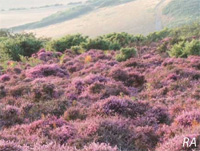|
|
Vision & objectives
Our objective
"The Island should be a place where plants, animals and habitats are conserved and enhanced, both for their own sake and as an integral part of our quality of life”.
The principal aim of the Isle of Wight Biodiversity partnership, in line with national guidance, is to maintain , restore and, where feasible, re-create the nationally and locally important priority habitats we possess and the species which depend upon them.
The Island is like a miniature version of south east England and has its fair share of the habitats characteristic of the region. In fact, it is unusually rich in species and habitats compared to similar areas on the mainland. The chalk grassland of the downs, the cliffs and slopes of the coasts and the estuaries are all important on a national and international scale.
Through the Partnership, we monitor our progress in achieving the following objectives within each habitat and report annually on success and failures.
Coastal By 2015 we aim to:
|
Wetlands
By 2015 we aim to:
|
Chalk Grassland By 2015 we aim to:
|
Estuaries
By 2015 we aim to:
|
Heathland and Acid Grassland 
By 2015 we aim to:
|
Lowland Meadows
By 2015 we aim to:
|
Woodland
By 2015 we aim to:
|
Other Habitats
We also have other important intertidal and subtidal habitats. We need to ensure their long-term wellbeing and survival against the background of sea level rise, but at this stage we have not set ourselves targets for achieving these aims. |
|
| A summary of the Targets and Actions from all of the Habitat Action Plans is available here. | ||
| home | partnership | habitats | species | biodiversity opportunity areas | benefits of biodiversity |
biodiversity & you | advice | walks & events | library | contact |